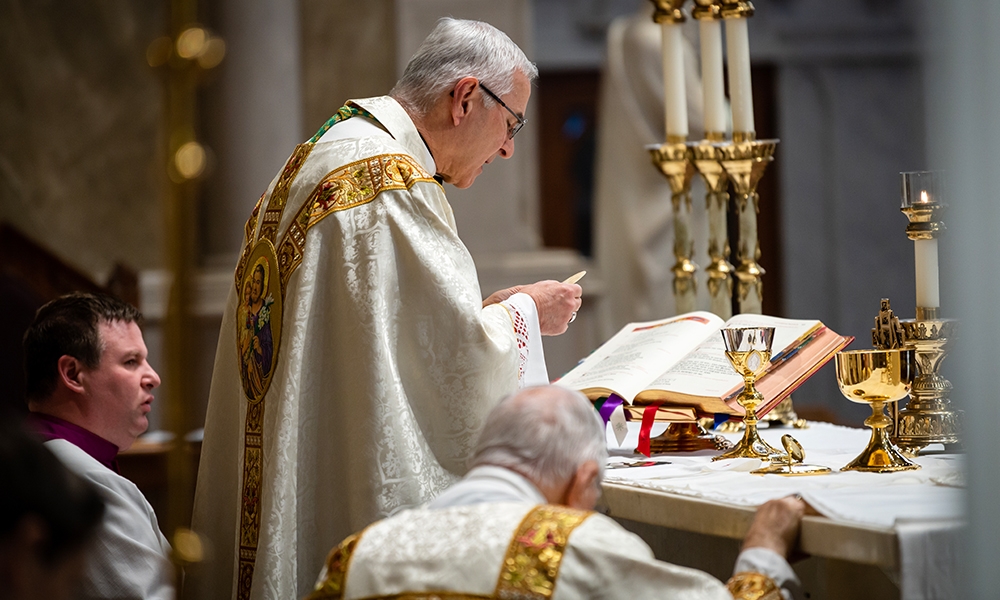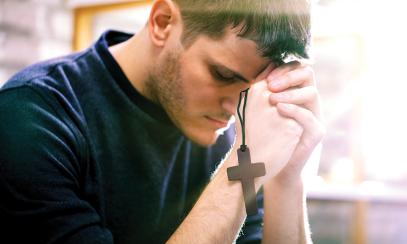
The true meaning of the Mass
One of the misunderstandings about the Mass by some is that the Mass is primarily a “communion service,” along with the reading of the Scriptures. A similar misunderstanding is that the priest is “offering sacrifices” and the people are watching.
One of the misunderstandings about the Mass by some is that the Mass is primarily a “communion service,” along with the reading of the Scriptures. A similar misunderstanding is that the priest is “offering sacrifices” and the people are watching.
The truth is that the Mass is primarily a “sacrifice” offered to the Father and the people are actively involved. That prayer of offering after the consecration is Jesus, in the heavenly sanctuary, and we, the ordained priest and the people, are offering again and again the sacrifice of Jesus on the hill of Calvary.
St. Paul did not write to the Corinthians: “As often as you do this (re-enacting the Lord’s Supper) you proclaim His last meal until He comes.” No, he wrote, “As often as you do this, you proclaim His death until He comes.”
At our Lord’s last meal, the table at which He sat became an altar with His powerful words of the consecration of the bread and wine into His Body and Blood, because he added in both consecrations the fact that His Body would be given up and His Blood would be shed for many for the forgiveness of sins.
At His words of commitment concerning His Body being offered up and His Blood being shed, Jesus mandated that this act should be repeated over and over, for He said: “Do this in memory of Me.” We use the term “the sacrifice of the Mass” yet do not always reflect the full implication of the “sacrifice.”
The Lay Priesthood
The spiritual beauty of it all is that baptized Catholics in the pews participate in this offering to the Father. Not to have this in mind is a misconception of the Mass on the part of many. The Church, from its very beginning, taught that the people should be actively thinking in terms of the great offering the priest and the people make to the Father. St. Peter in his first letter (1 Pt 2: 9) told all the baptized that they were a royal priesthood.
Please do not think I made up the term “lay priesthood.” Pope Pius XI said that Jesus shares His priesthood with all the baptized. Moreover, Pope Pius XII wrote that for all baptized Catholics, the priesthood of the laity is their highest privilege. Priesthood of the laity is also in the official Catechism of the Catholic Church. Yet, it seems to be a great misconception to not be happily obsessed with the privilege of doing what He told us to do immediately after the powerful words of consecration. Christ, the priest at the altar, and all the baptized present, make this offering.
Some Catholics “watch the priest” who offers the Holy Sacrifice. They might adore Christ at the elevation, but with no thought that right after the elevation they should offer with the priest, who does not state, “I offer You …,” but, “We offer You …”
Again, one must understand that there are degrees of participation in the priesthood of Jesus. The first degree is sharing in the priesthood of Jesus by virtue of our baptism, which is actually stated in the official baptism ritual of the Church.
A much greater sharing in the priesthood is that of the ordained minister. The people can share in the “offering of Christ” to the Father, but the ministerial, or “ordained,” priest must make the offering present in the consecration of the bread and wine.
The ultimate sharing is when a bishop is consecrated, whereby he can ordain other priests and consecrate other bishops. Again, we need the authority of the Church to make these distinctions. Remember how the Holy Spirit came to the apostles on Easter Sunday (“Receive the Holy Spirit, whose sins …”), and then 50 days later, the Spirit came more forcefully on the apostles at Pentecost. As in the coming of the Holy Spirit in degrees, so it is with the priesthood of Jesus. There are “degrees of priesthood.”
At the small offertory of the bread and wine to be used at the words of consecration, we should mentally put our personal sufferings and acts of charity on the paten to be offered along with the bread that will become Christ. Jesus will take our offerings with Him to the Father.
In conclusion, the Mass is not just a “communion service” with a few Scripture readings, nor is it a time to simply spectate; rather, the Holy Sacrifice is a time of offering Christ and ourselves to the Father.
Msgr. Martin M. Muller is Pastor Emeritus of Our Lady of Sorrows Catholic Church



